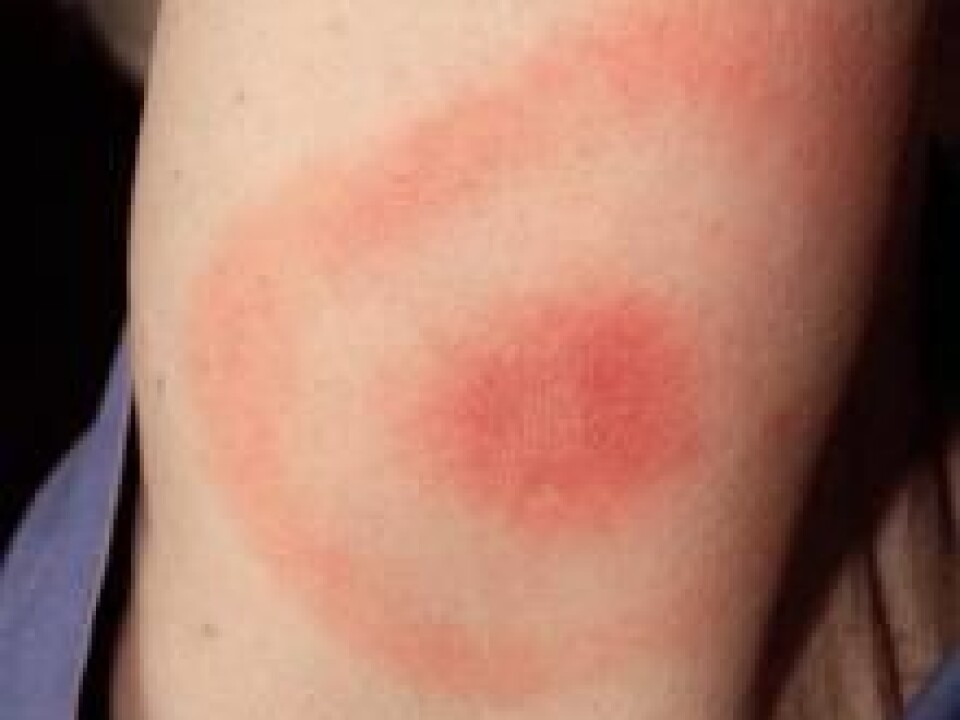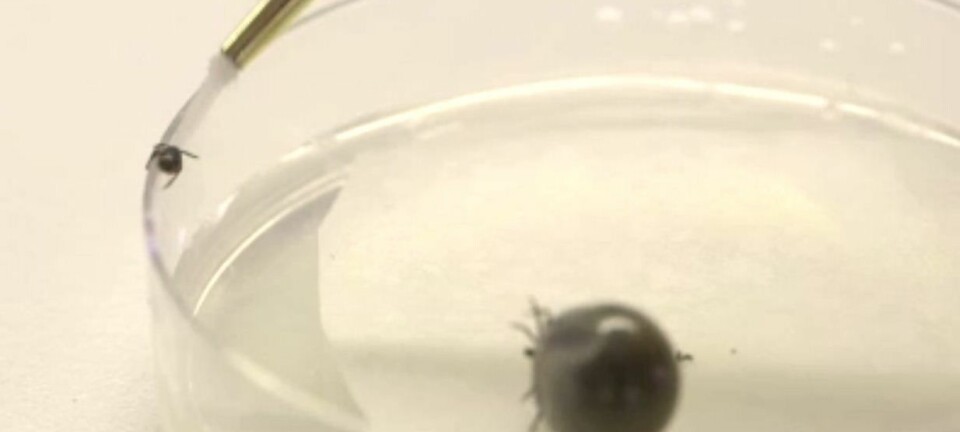
New type of infection by ticks leaves no visible symptoms
Scientists warn GPs to be aware of a new strain of bacterial infection from tick bites that leave no characteristic red rash and results in an intermittent fever.
The humble tick can transmit severe infections to unsuspecting countryside enthusiasts.
Some of the small blood-sucking mites carry the bacterium Borrelia -- If bitten you risk infection by Lyme disease, which at worst can cause encephalitis and paralysis.
Fortunately, Borrelia bacteria often leave a tell tale red rash, allowing quick detection, and treatment by antibiotics.
Now, researchers have found a new Borrelia species in Denmark, called Borrelia miyamotoi that poses some different symptoms, making it harder for doctors to diagnose the resulting infection.

This adds to the existing evidence that Borrelia miyamotoi in ticks is spreading throughout Europe, North America, and large swathes of Asia -- The map shows how widespread this bacterium is in different tick species across the world.
Lyme disease without the red rash
“Miyamotoi doesn’t leave the typical warning signs that Borrelia do," says René Bødker, an epidemiologist with the Danish Technical University (DTU) Veterinary Institute in Denmark, part of the international team of researchers behind the new discovery.
If bitten, it causes a type of muscle pain, so-called ‘relapsing fever’. It lasts for several days, and then disappears. It returns about 10 days later -- unusual behaviour for the Borrelia strain typically associated with Danish ticks.
"It is quite rare to develop a rash when you become infected with Borrelia miyamotoi. On top of that, it is unusual to develop a recurring fever. So I don’t think many practitioners will instantly think 'oh, it's a Borrelia infection', and there is a risk that such infections will be overlooked by the doctor," says Bødker.
The infected risk receiving late treatment

The different symptoms make Borrelia miyamotoi particularly problematic because, like the more common Borrelia bacteria, it too can cause Lyme disease with serious consequences if not detected and treated in time.
"You can become pretty sick from it. The Russians have a wide range of human cases that they now attribute to this infection. The danger is that it enters the brain and causes neuroborreliosis [a central nervous system disorder], "says Bødker.
Sigurdur Skarphédinsson, who studies Borrelia infections as a consultant at Department of Infectious Diseases at Odense University Hospital, Denmark, agrees that practitioners may overlook the new Borrelia species.
"It always takes some time before people become fully aware of a new infection in an area. Not all doctors were fiercely interested in Borrelia beforehand, so of course there will be a period where there is an increased risk of such an infection being overlooked," says Skarphédinsson, who was not involved in the new discovery.
Unknown global distribution of human infections
“There is limited knowledge of the full geographic distribution of human Borrelia miyamotoi infection, but it is likely to be similar to that of Lyme disease,” writes Senior Research Scientist Peter J. Krause from Yale University in the US, in a new study published in the journal Clinical Microbiology and Infection.
In the US study, Krause and colleagues review the global distribution of Borrelia miyamotoi found in a range of tick species.
They find that the Borrelia miyamotoi strain is found in ticks from Asia (Japan and central Russia), North America (the United States and Canada), and Europe (Czech Republic, Denmark, England, Estonia, France, Germany, Netherlands, Poland, Sweden and Switzerland).
But human cases of infection by Borrelia miyamotoi have so far only been reported in Russia, the United States, the Netherlands, and Japan.
As yet, there are no confirmed cases of infection by Borrelia miyamotoi in Denmark. But according to Skarphédinsson, there is 'no doubt' that some will have already been infected.
"When you have the infection in ticks -- and we know that the infection can infect humans based on studies that have been made in Russia – then there will surely be some people who have already been infected," says Skarphédinsson.
He adds that the common treatment for Borrelia also works on the newly discovered species. But doctors need to be aware of the recurring fever and ask the patient if they may have been exposed to tick bites.
The advice from Krause and colleagues is that GPs should be aware of this strain of bacteria in regions where ticks are known to carry it. According to them, diagnosis requires specific tests including blood smears, and a special medical technique called PCR (polymerase chain reaction) to identify DNA of the bacteria, and tests for specific antibodies.
How was the bacterium discovered in Denmark?
In the new study, published in the journal Frontiers in Cellular and Infection Microbiology, the DTU Veterinary Institute and The Danish Veterinary and Food Administration screened 25 Danish forest areas for the Borrelia bacteria.
In every forest, they gathered groups of 15 ticks from up 15 different sites in the forest -- 225 ticks in each forest area.
Ticks were then DNA tested, and it turned out that they contained two strains of Borrelia, never before found in Denmark.
One newly discovered species of common Borrelia bacteria -- Borrelia spielmanii -- was found in a third of the collected ticks groups.
The second newly discovered species -- Borrelia miyamotoi – is genetically more similar to tropical strains of Borrelia. It was found in eight per cent of the groups.
“Borrelia miyamotoi is a new species that pops up everywhere in Europe. The Swedes have found it, and now we have discovered it in Denmark. It is relatively common," says Bødker.
--------------
Read the Danish version of this article on Videnskab.dk
Translated by: Catherine Jex
Scientific links
- High-throughput screening of tick-borne pathogens in Europe, Frontiers in Cellular and Infection Microbiology, 2014; 4: 103., doi: 10.3389/fcimb.2014.00103
- Borrelia miyamotoi infection in nature and in humans. DOI: http://dx.doi.org/10.1016/j.cmi.2015.02.006








